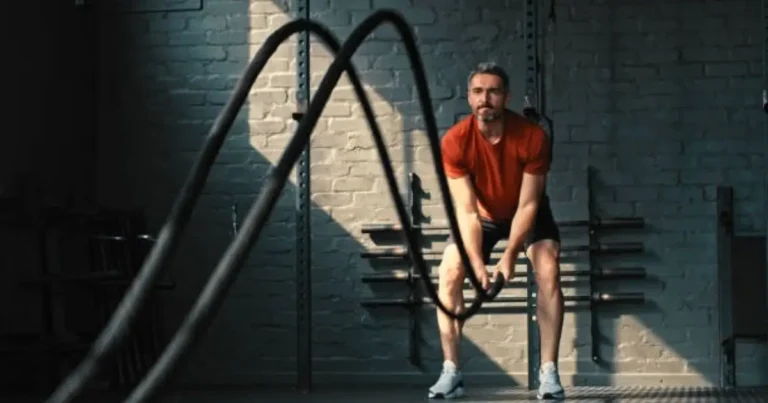The Ultimate Cutting Workout Plan: Science-Backed Strategies for Maximum Fat Loss
Are you looking to shed excess body fat while preserving your hard-earned muscle? A well-designed cutting workout plan is your ticket to achieving that lean, defined physique you’ve been working toward. Unlike typical weight loss approaches that often result in muscle loss alongside fat, a strategic cutting plan helps you maintain muscle tissue while specifically targeting fat stores.
In this comprehensive guide, I’ll walk you through the science of fat loss, provide a structured cutting workout plan, and share evidence-based nutrition strategies to optimize your results. Whether you’re preparing for a competition, planning for beach season, or simply wanting to improve your body composition, these cutting principles will help you reach your goals efficiently and effectively.
Table of Contents
Understanding the Science Behind Effective Cutting

Before diving into workout specifics, it’s important to understand what happens physiologically during a cutting phase. When implementing a cutting workout plan, your primary goal is to create a caloric deficit while providing enough stimulus to preserve muscle mass.
Three key principles govern successful cutting phases:
- Caloric deficit: Consuming fewer calories than you burn
- Protein preservation: Maintaining adequate protein intake to prevent muscle breakdown
- Training stimulus: Continuing to challenge muscles to signal the body to preserve them
Research published in the International Journal of Sports Nutrition shows that subjects who maintained high protein intake (2.3g/kg of body weight) and performed resistance training during a caloric deficit preserved significantly more muscle mass than those who only restricted calories.
“The most effective cutting workout plans combine strategic strength training with appropriate cardiovascular exercise while maintaining sufficient protein intake to preserve lean muscle tissue.” – Dr. Eric Helms, Sports Nutrition Researcher
Components of an Effective Cutting Workout Plan
A balanced cutting workout plan incorporates several training modalities:
- Heavy resistance training: Maintains muscle mass and strength
- Metabolic resistance training: Burns calories during and after workouts
- Strategic cardio: Enhances caloric deficit without excessive muscle breakdown
- Recovery protocols: Prevents overtraining during caloric restriction
Let’s break down each component and see how they fit together in your weekly routine.
Resistance Training: The Foundation of Your Cutting Workout Plan
While many people mistakenly focus solely on cardio for fat loss, resistance training is actually the cornerstone of an effective cutting workout plan. Here’s why:
- Preserves lean muscle mass: Studies show that resistance training signals your body to retain muscle even during caloric deficits
- Increases metabolic rate: Muscle tissue burns more calories at rest than fat tissue
- Improves insulin sensitivity: Better nutrient partitioning means more calories used for recovery rather than stored as fat
- Creates EPOC effect: Post-workout “afterburn” increases calorie expenditure for hours after training
For optimal results, your cutting workout plan should prioritize:
- Compound movements: Exercises like squats, deadlifts, and bench presses that engage multiple muscle groups
- Progressive overload: Continually challenging muscles through increased weight or volume
- Sufficient volume: Aim for 10-15 sets per muscle group per week
- Appropriate frequency: Train each muscle group 2-3 times weekly
Strategic Cardio for Enhanced Fat Loss
While resistance training forms the foundation, strategic cardio accelerates fat loss results. The key is finding the right balance without compromising muscle retention.
HIIT (High-Intensity Interval Training)
- Burns significant calories in shorter timeframes
- Preserves muscle tissue better than traditional steady-state cardio
- Creates substantial EPOC effect for continued calorie burning
- Recommended frequency: 2-3 sessions per week, 20-30 minutes each
LISS (Low-Intensity Steady-State)
- Targets fat oxidation specifically
- Less taxing on recovery systems
- Can be performed more frequently
- Recommended frequency: 2-4 sessions per week, 30-60 minutes each
A recent meta-analysis published in the British Journal of Sports Medicine found that combining both HIIT and LISS cardio produced superior fat loss results compared to either method alone.

Nutrition Essentials for Cutting Success
Even the most perfectly designed cutting workout plan will fall short without proper nutritional support. Here are the key nutritional principles to follow:
Caloric Deficit Calculation
To lose fat effectively, aim for a moderate caloric deficit:
- Calculate maintenance calories (numerous online calculators available)
- Reduce by 300-500 calories for sustainable fat loss
- Adjust based on weekly progress (aim for 0.5-1% of body weight loss per week)
Macronutrient Prioritization
| Macronutrient | Recommendation | Purpose During Cutting |
| Protein | 1.8-2.2g per pound of lean body mass | Preserves muscle tissue, highest thermic effect, increases satiety |
| Carbohydrates | Strategic timing around workouts | Fuels training performance, replenishes glycogen |
| Fats | Minimum 0.3g per pound of body weight | Hormone production, vitamin absorption, satisfaction |
Hydration Strategy
Proper hydration enhances fat metabolism and workout performance:
- Drink 0.5-1 gallon of water daily
- Add 16-24 oz for each hour of exercise
- Consider electrolyte supplementation during intense training sessions
Recovery Optimization: The Often Overlooked Component
During a cutting phase, recovery becomes even more critical as your body has fewer resources available. Implement these recovery strategies to maintain performance:
- Prioritize sleep: Aim for 7-9 hours of quality sleep nightly
- Manage stress: Practice meditation, deep breathing, or other stress-reduction techniques
- Strategic deloads: Reduce training volume by 40-50% every 4-6 weeks
- Active recovery: Incorporate gentle movement on rest days (walking, swimming, yoga)
“Recovery is where adaptation happens. Without adequate recovery, even the best cutting workout plan will lead to diminished returns or injury.” – Dr. Mike Israetel, Renaissance Periodization
Tracking Progress Beyond the Scale
When following a cutting workout plan, the scale can be misleading. Track these additional metrics for a complete picture:
- Body measurements: Waist, hips, chest, arms, and thighs (weekly)
- Progress photos: Same lighting, time of day, and poses (bi-weekly)
- Strength metrics: Key lifts in your program (each session)
- Energy levels: Subjective rating from 1-10 (daily)
- Workout performance: Volume completed, perceived exertion (each session)
Common Cutting Challenges and Solutions
Even the best cutting workout plan can encounter obstacles. Here are solutions to common challenges:
Challenge: Strength Loss
- Solution: Reduce training volume but maintain intensity (weight on the bar)
- Strategy: Focus on lower rep ranges (4-6) for compound movements
Challenge: Excessive Hunger
- Solution: Increase protein and fiber intake
- Strategy: Implement strategic refeeds once weekly (+500 calories, primarily from carbohydrates)
Challenge: Low Energy
- Solution: Prioritize pre-workout nutrition
- Strategy: Periodize carbohydrate intake around training sessions
- Consider: Caffeine supplementation 30 minutes before workouts
Challenge: Plateaued Fat Loss
- Solution: Implement diet breaks every 4-6 weeks
- Strategy: Return to maintenance calories for 5-7 days before resuming deficit

Sample Cutting Workout Plan Schedule
A well-structured cutting workout plan balances intensity, volume, and recovery. Here’s a sample weekly schedule that incorporates all the principles we’ve discussed:
- Monday: Upper Body Strength + 20 min HIIT
- Tuesday: Lower Body Strength + 15 min HIIT
- Wednesday: Active Recovery + 40 min LISS
- Thursday: Push-focused Training + 20 min HIIT
- Friday: Pull-focused Training + 15 min HIIT
- Saturday: Full Body Circuit + 30 min LISS
- Sunday: Complete Rest or Light Activity
See the full detailed cutting workout plan above for exercise selection, sets, reps, and progression strategies.
Fine-Tuning Your Approach: Personalization Is Key
While this guide provides a comprehensive framework, the most effective cutting workout plan is one tailored to your individual needs. Consider these factors when customizing your approach:
- Training age: More experienced lifters may need higher volume to stimulate results
- Recovery capacity: Adjust frequency based on how quickly you recover
- Preference: Choose cardio modalities you enjoy and will consistently perform
- Schedule: Structure workouts around your life obligations
- Previous cutting history: Learn from past successful and unsuccessful approaches
Conclusion: Executing Your Cutting Workout Plan
Achieving dramatic fat loss while preserving your hard-earned muscle requires a strategic, multi-faceted approach. By implementing the principles outlined in this guide—balanced resistance training, strategic cardio, optimized nutrition, and adequate recovery—you’ll be well-equipped to transform your physique effectively.
Remember that consistency trumps perfection. Following a good cutting workout plan consistently will yield better results than sporadically following a “perfect” plan. Track your progress, make data-driven adjustments, and trust the process.
Are you ready to implement these cutting strategies and reveal your best physique yet? The comprehensive plan outlined above provides everything you need to get started today.
What’s your biggest challenge when it comes to cutting? Drop a comment below, and let’s troubleshoot together!









Leave a Reply